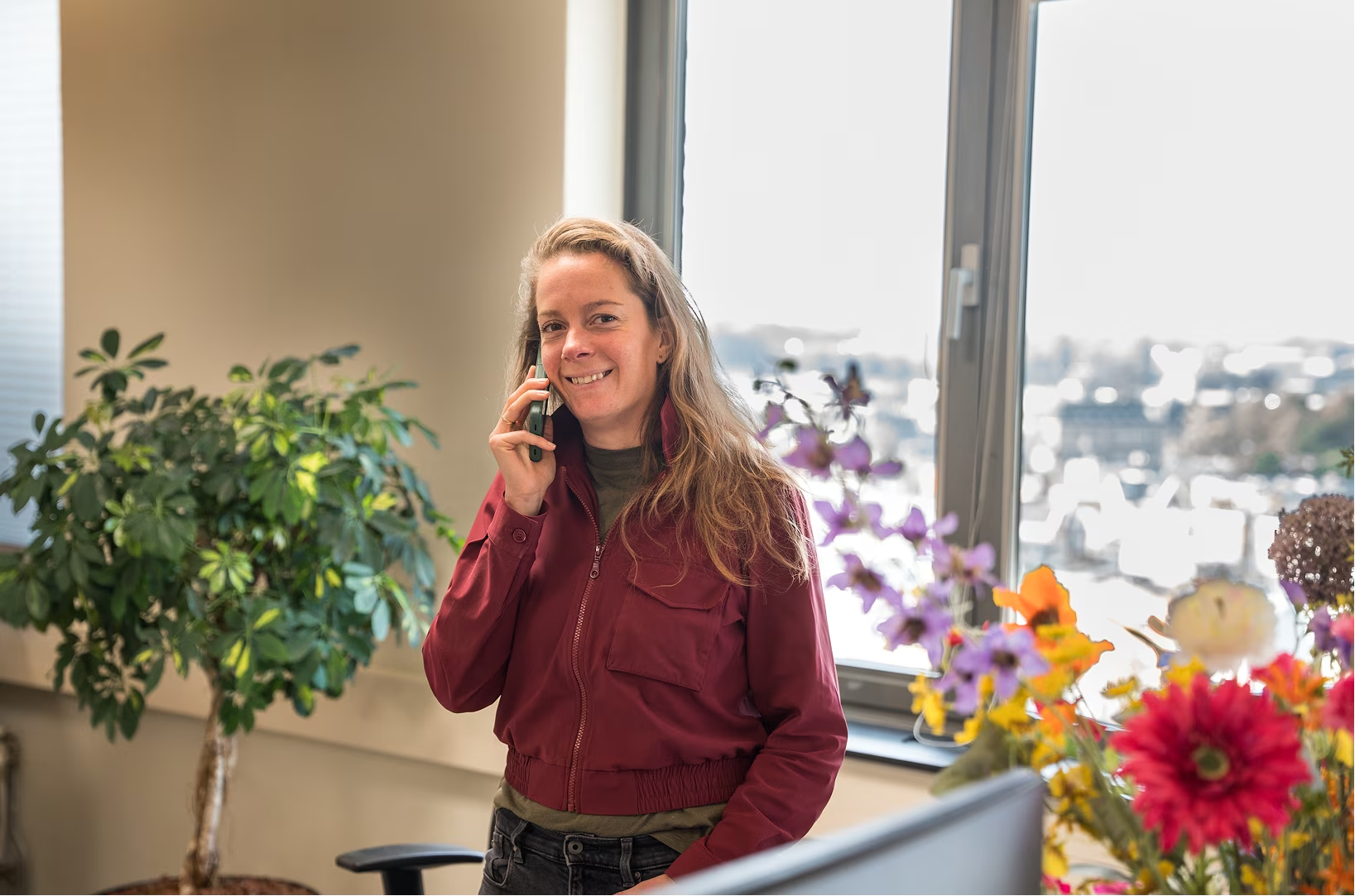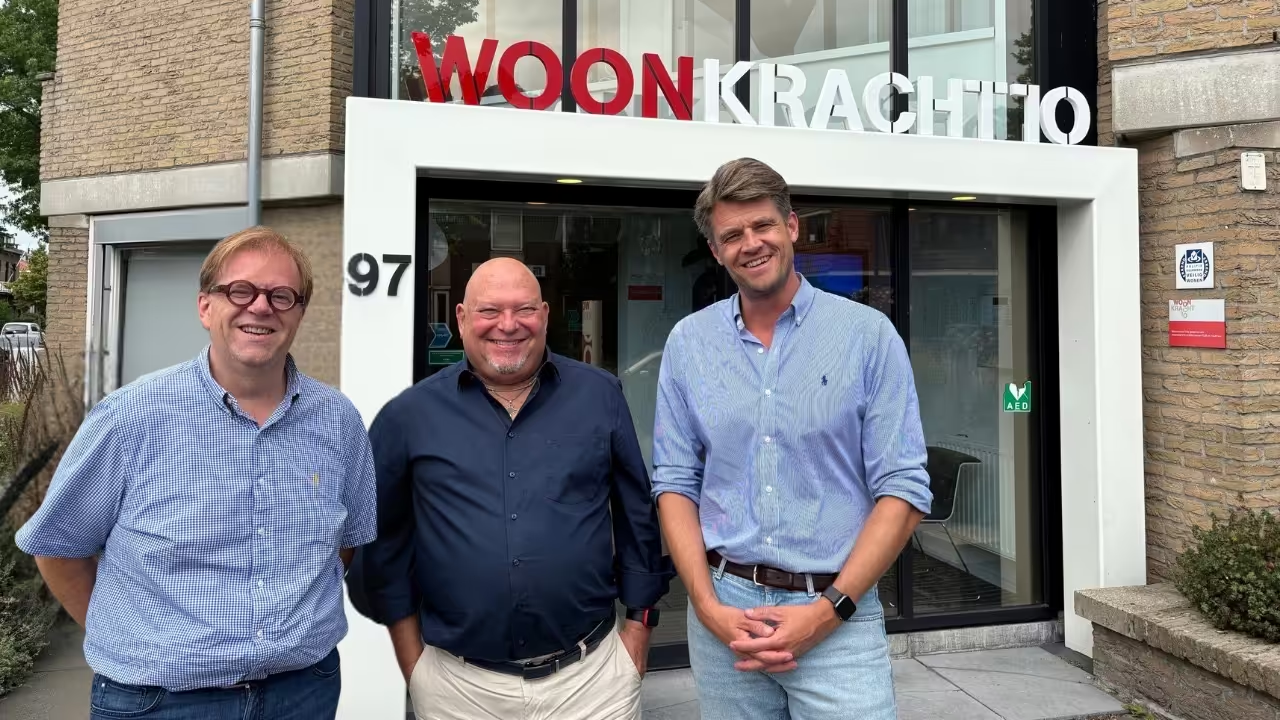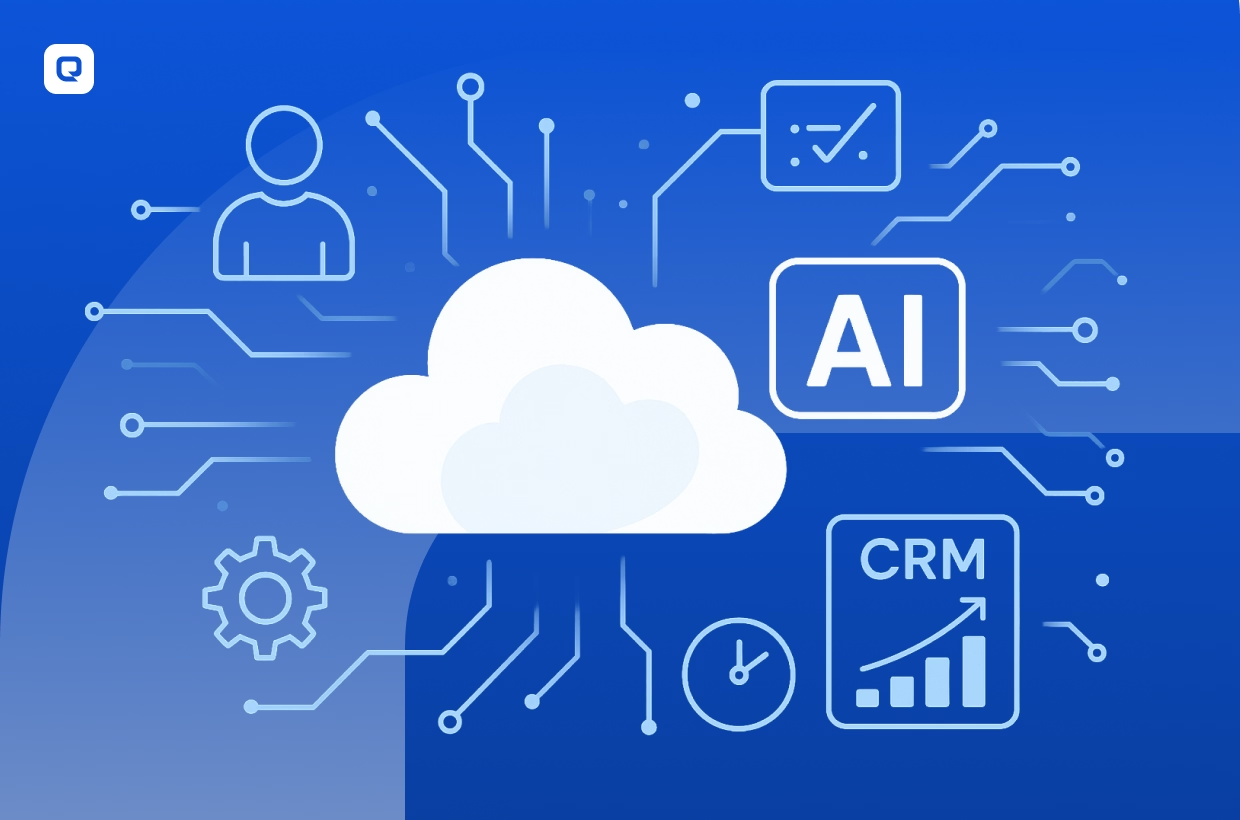Software companies often claim to have “future-proof technology”. But what does that actually mean? After all, what runs under the hood of a software application largely determines its future-proofing. The problem: it's so hard to explain in “normal human language”. In this blog, we explain clearly what technical terms such as multi-tenant SaaS and AI mean, provide an insight into the technical structure of Embrace and compare our approach with that of other suppliers in the Netherlands.
Nowadays, almost everything in the Netherlands runs in the cloud, and most people have an idea what that means. AI is now also a commonly used buzzword, but although the applications are becoming increasingly clear, the underlying techniques and preconditions remain complex. Research by Evolve shows that the degree of AI innovation in software applications is becoming increasingly important. In order to develop and deliver AI functionalities quickly and effectively, it is an important precondition that an application is based on a multi-tenant SaaS model. This makes it possible for data models to be trained at scale and innovation runs faster. We'll explain exactly what this means later — but first, we'll dive into the evolution of modern cloud technology.
The evolution of the cloud in five phases
The evolution of cloud servers has gone from physical, standalone machines to cloud-based, multi-tenant architectures such as SaaS. The main stages:
- Physical Servers (On-Premise) - The Early Phase
📅 90s
🔹 Standalone physical servers were managed in data centers or on site.
🔹 Applications ran on one server per customer without sharing resources.
🔹 High hardware, maintenance and scalability costs.
🔎Use: Proprietary IT infrastructure, local databases and company-specific applications - Virtual Servers (Virtualization) - More efficient use of hardware
📅 2000s
🔹 Virtualization (e.g. with VMware, Hyper-V) made it possible to run multiple virtual machines (VMs) on one physical server.
🔹 Improved efficiency and isolation between customers.
🔹 More scalable, but still required a lot of server-side management.
🔎 Use: Midsize business data centers, hosted applications and web servers, and hybrid IT solutions. - Dedicated Hosting & Single-Tenant Cloud - Tailored to SaaS
📅 Years 2005 — 2020
🔹 Cloud providers (e.g., AWS, Azure) began offering dedicated servers as managed infrastructure.
🔹 Single-Tenant Cloud: One customer per server environment, but hosted by a cloud provider.
🔹 Still high costs per customer and limited scalability.
🔎 Use: Enterprises with stringent compliance requirements, sensitive data storage (e.g. housing, government), and legacy applications. Embrace started in this era, which is why we offered our applications this way for a long time. Many applications in the Netherlands have not yet made the transition to multi-tenant SaaS — we'll come back to that later. - Multi-Tenant SaaS — Maximum Efficiency & Scalability (Now)
📅 Years 2015 — Present
🔹 Multiple customers (tenants) share the same infrastructure and applications.
🔹 Automatic updates; no customer-specific maintenance is required.
🔹 AI and machine learning can learn across all tenants.
🔹 Costs are drastically reduced by sharing resources.
🔎 Use: Microsoft 365, Google Workspace, Salesforce and now also Dutch applications such as Embrace and Plek. - Serverless & Edge Computing — The Future
📅 2025 — future
🔹 Serverless computing (such as AWS Lambda, Azure Functions) runs code without managing a server.
🔹 Edge computing brings processing closer to the user for real-time performance (e.g., IoT, 5G).
🔹 Even less infrastructure management is needed, so that the full focus is on AI and software innovation.
🔎 Use: AI and machine learning, IoT and smart devices, real-time data processing. This is really a thing of the future.

Benefits of multi-tenant SaaS
All these technical terms are good, but what's the use of this for me as a customer? We list the benefits of multi-tenant SaaS:
- Ongoing updates and innovation
• New features and security updates are rolled out centrally to all customers without having to install or manage software themselves.
• As a result, the platform updates quickly, so that you, as a customer, do not have to worry about testing. This is an essential difference compared to a four-, six- or eight-weekly release cycle.
• AI functionalities (such as ChatGPT) are immediately integrated and made available to all tenants. - Scalability and cost efficiency
• Through multi-tenancy, resources such as computing power, storage and AI models can be used optimally.
• This reduces costs per user and makes it possible to offer scalable services — from small housing associations to large government institutions.
• This is also the reason that Embrace has competitive pricing compared to Dutch competition. - Shared infrastructure, isolated data
• Embrace runs entirely on Azure and uses a multi-tenant architecture, where customers share the same underlying hardware and software.
• Data from different organizations is strictly separated via logical isolation, so that each customer has their own secure environment. - Management and configuration by tenant
• Each organization can manage its own Embrace environment via the Portals Builder, Theme Editor, and CMS. Because Embrace uses the most modern development languages and open-source software, the software is highly flexible (see also our tech stack).
• Administrators can adjust settings, such as user rights, security policies, and compliance settings.

Benchmark: Social Intranet suppliers in the Netherlands
Multi-tenant SaaS is part of the most modern phase of server evolution and is part of the larger story of cloud computing and SaaS architectures. In an IT curriculum, for example, this would fall under the themes “Cloud Computing”, “SaaS Architecture” or “Cloud Infrastructure & DevOps”. You don't necessarily have to remember these terms, but it's probably interesting for our fellow nerds. :-)
It takes a huge investment for a software club to make the transition to a new phase. At Embrace, we know all about that. It takes a lot of time, money and energy to set up the technical architecture so that it is ready for the future. A long-term goal that is not always immediately tangible to our customers. New features, buttons or design improvements are immediately noticeable, while what's under the hood often goes unnoticed. Nevertheless, we deliberately made the trade-off between short-term and long-term interests in order to be ready for the AI era. Nowadays, we dare to say that we have “state of the art” technology, which allows us to further develop very quickly and roll out updates weekly, without you as a customer noticing.
What about the rest of the Netherlands? Unfortunately, you can't skip phases. Who will have to endure this pain (and therefore invest heavily) in the coming years, and who is already in the tech leading group? The degree of maturity determines how quickly updates, new functionalities and developments in the field of AI (more later) are possible.
To make this concrete, we are looking at the Dutch market for social intranet and digital workplaces. Microsoft SharePoint, Plek, and Embrace are fully multi-tenant SaaS. In doing so, they have currently reached the highest level of future-proofing. Solutions such as A&M Impact, WinkWaves, IRIS Intranet and Pleio are still in phase 3, which means that they will have to invest heavily in renewing their architecture in the coming years — and that customers will not immediately benefit from the technical innovations under the hood

AI innovation possible with multi-tenant SaaS
For a software company that wants to accelerate AI innovation, it is very important to use a multi-tenant SaaS model. Multi-tenant SaaS accelerates AI innovation, reduces costs, and enables continuous improvements. For software companies that want to roll out AI widely and scale up quickly, this model offers enormous advantages:
- Scalable data and model training
• AI models get better as they process more data. In a multi-tenant SaaS solution, anonymized and aggregated data from multiple customers can be used to improve machine learning models. This results in faster and more effective AI innovation.
• Example: AI-based chatbots or predictive analytics can learn from user behavior across multiple customers. - Faster AI updates
• In a single-tenant environment, each customer must manage their own version of AI models, resulting in slow and inefficient updates.
• In a multi-tenant SaaS environment, central AI models can be continuously updated so that all customers benefit from the improvements immediately - More efficient use of resources
• AI models require a lot of computing power. Multi-tenancy ensures that resources are shared between customers, so that GPUs and cloud servers can be used more efficiently.
• This reduces costs and makes real-time AI functionalities (such as image recognition or predictive analytics) more accessible to a wider audience. - Automatic AI monitoring and management
• AI requires continuous monitoring and optimization to adjust bias, drift, and performance.
• Multi-tenant SaaS provides the ability for central AI monitoring, allowing problems to be detected and resolved more quickly, without individual customers having to worry about AI maintenance. - Faster innovation
• A multi-tenancy SaaS platform makes it possible to offer AI as a service. This economy of scale can result in significant cost savings.
• At Embrace, we strive to offer AI human-friendly: instead of writing a “prompt”, we offer an understandable button to perform actions. This lowers the adoption threshold for AI use within governments, housing associations and healthcare.
• Here is an overview of our AI functionalities - Compliance, security and AI governance
• AI compliance (such as AVG/GDPR) is easier to manage when all customers work within a standardized SaaS environment.
• We use Microsoft Azure technology, which complies with strict security standards, including data encryption and ISO certifications.
Embrace under the hood: Tech Stack
Our base is Microsoft Azure, complemented by a range of Microsoft 365 products and services. In some cases, we make exceptions when the market offers better or cheaper alternatives.
So our foundation is Azure. This is where we host our multi-tenant platform. Our products are divided into smaller services that we host with Azure Kubernetes Services. As a result, we are scalable, reliable and can make changes very quickly. We can create customer environments with the click of a mouse using Terraform.
Our own products are developed in .NET Core, NodeJS, or Java. We supplement these with powerful cloud applications, such as Microsoft DataFactory, PowerBI and PowerAutomate. We also use robust best-of-breed applications such as the Elastic Stack, Squidex and KeyCloak.
All data and logic from our software comes together in an Apollo/GraphQL gateway. On top of that, we build our front-ends in React or React Native. We are also implementing developments in the field of AI, such as ChatGPT, within Microsoft Azure.

Curious about what Embrace looks like 'above' the hood? Then request a free demo and discover our software in action. Our advisors are happy to show you how it works!







